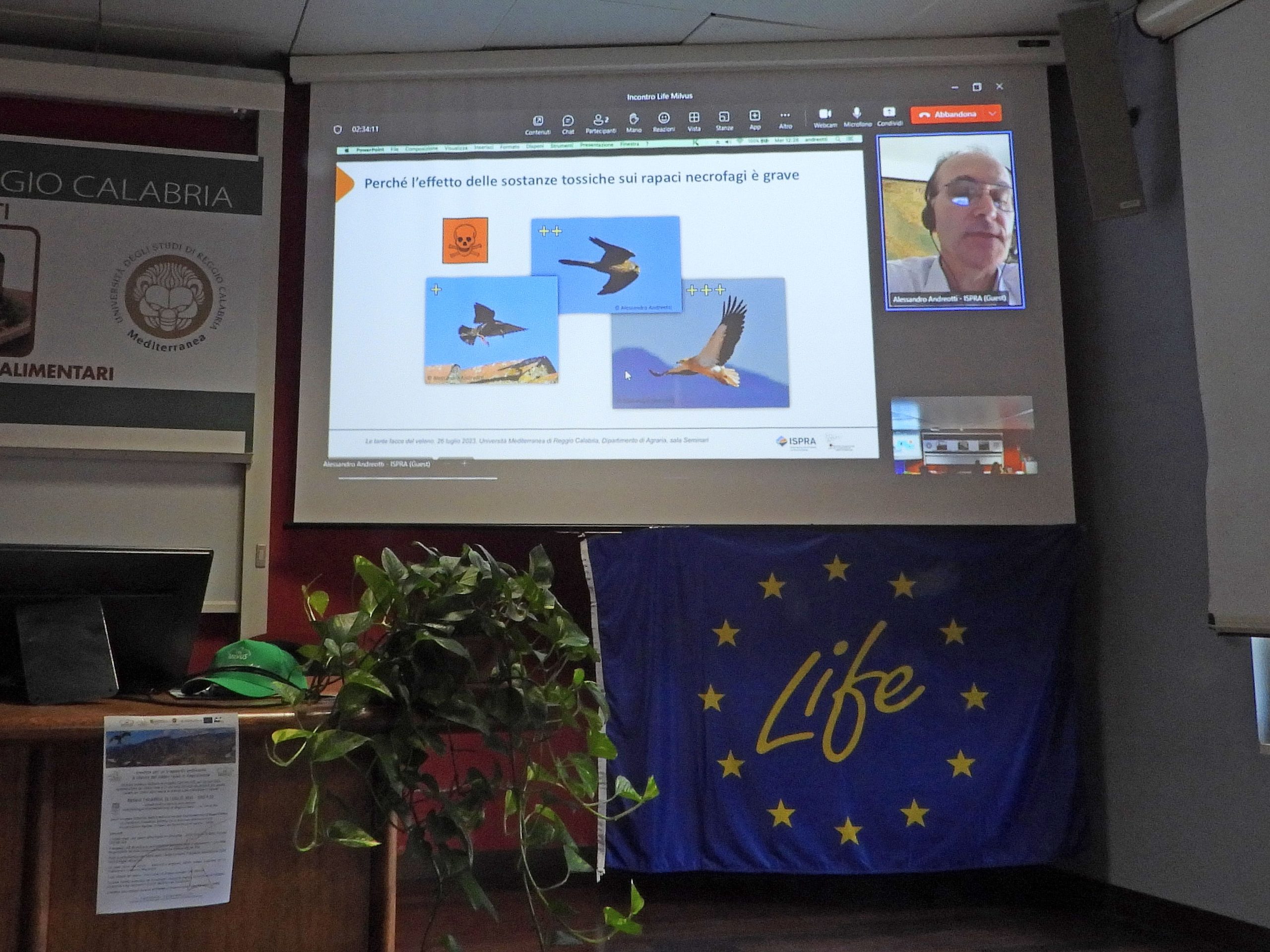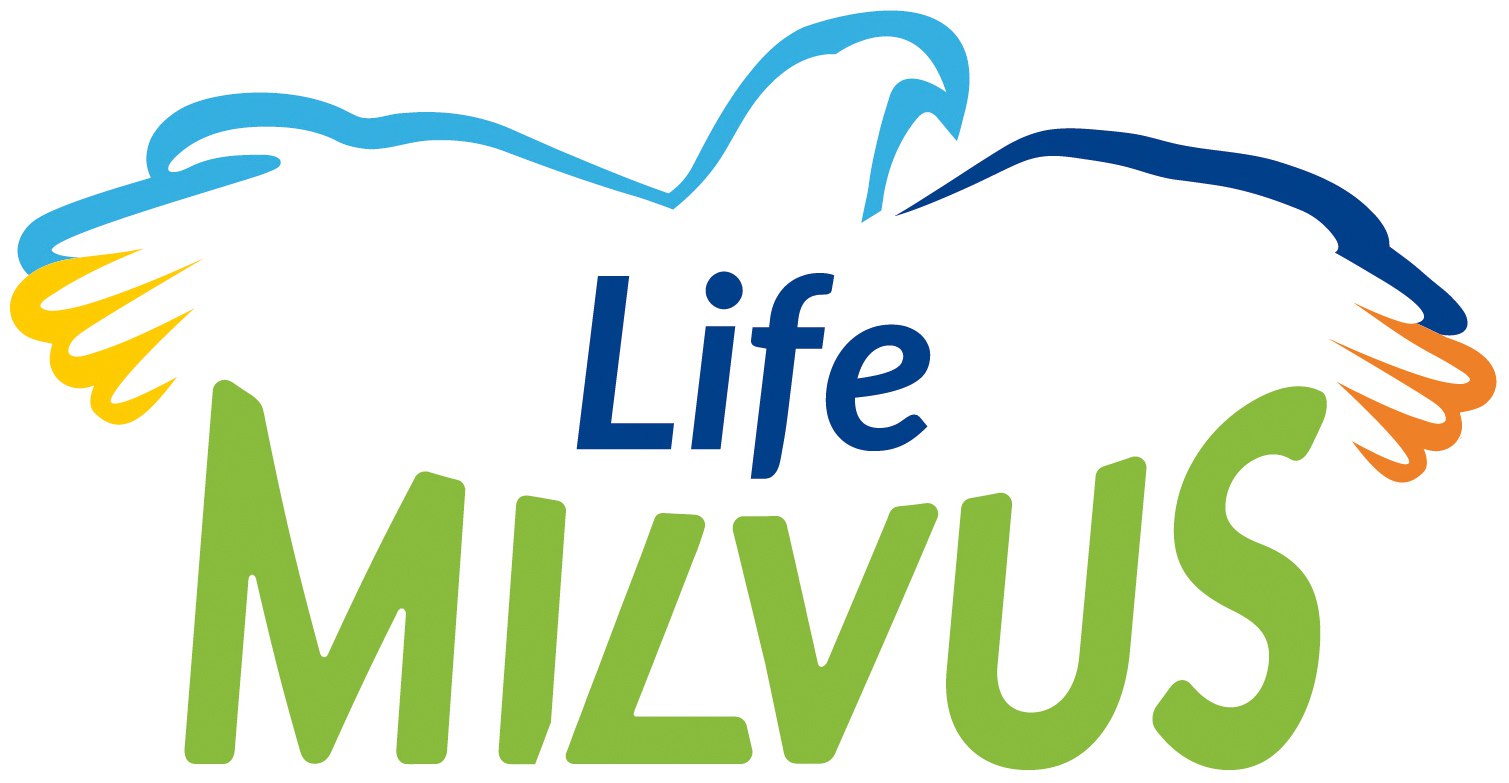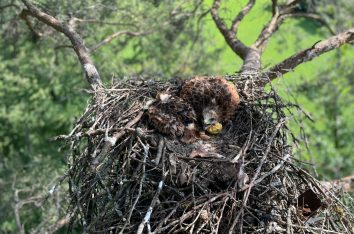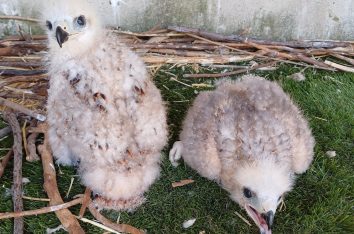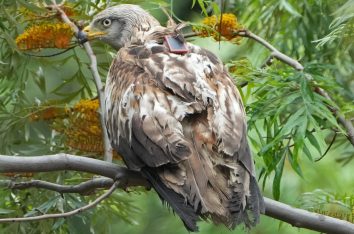On July 26, 2023, a public meeting organized by Aspromonte National Park was held in Reggio Calabria to inform and involve various interest groups in the area in the LIFE MILVUS project.
The meeting, held with the collaboration of the Department of Agriculture of the Università degli Studi Mediterranea di Reggio Calabria, allowed to talk about the ongoing reintroduction program of the red kite in the PNA and to address a number of aspects related to its conservation and ecological role.
The event was introduced and coordinated by Prof. Virna Fasone and the Director of the Department of Agriculture Giovanni Enrico Agosteo and included a contribution from Aspromonte National Park Authority President Leo Autelitano.
An initial talk, given by LIFE MILVUS project manager Anna Cenerini, introduced the species and provided information on its distribution and conservation status in Europe and Italy. She also focused attention on the important ecological role of the red kite, which, in addition to naturally keeping rodent and corvid populations under control, with its diet mainly based on dead animals "cleans up" the environment and prevents the spread of zoonoses.
The methodology used for the reintroduction of the red kite in the Aspromonte National Park was described by Luca Pelle, LIFE MILVUS project manager, who also outlined the synergistic actions being implemented to benefit the species, which include the isolation of medium-voltage power lines by E-Distribuzione S.p.A. to mitigate the risk of electrocution, support through the provision of power points, and public awareness and information activities.
Guido Ceccolini, president of the Association CERM Centro Rapaci Minaci Threatened, explained the important role played by feeding points for red kites in reintroduction and repopulation programs. The activation of these small facilities favors the establishment of red kites and their reproductive success, attracts and supports migrating and wintering individuals, and is a major tourist attraction, offering the possibility of easily observing this magnificent bird of prey.
Dr. Alessandro Andreotti, of the Italian National Institute for Environmental Protection and Research ISPRA, addressed the problem of wildlife poisoning and analyzed the many toxic substances that can lead to serious impacts on raptor populations, from rodenticides used to eliminate rodents, to anti-inflammatories for veterinary use, to phytopharmaceuticals, to lead in hunting ammunition.
Special attention was paid in a talk by Anna Cenerini to the phenomenon of illegal use of poisoned baits and mouthfuls, one of the most serious threats to biodiversity at the European level to which the red kite is particularly exposed. The species, in fact, can die both because it detects and feeds on any morsels scattered on the ground and because it feeds on dead or dying animals from ingesting poison (including rodents poisoned by legally used rodenticides). To prevent and counter this dreaded menace, the Anti-poison Dog Units of the CUFA Comando Unità Forestali, Ambientali e Agroalimentari dell'Arma dei Carabinieri operate in Italy, and they also collaborate with the LIFE MILVUS project by carrying out periodic monitoring inspections in the Park territory.
Audience participation was attentive and interested, with numerous questions directed to the speakers.
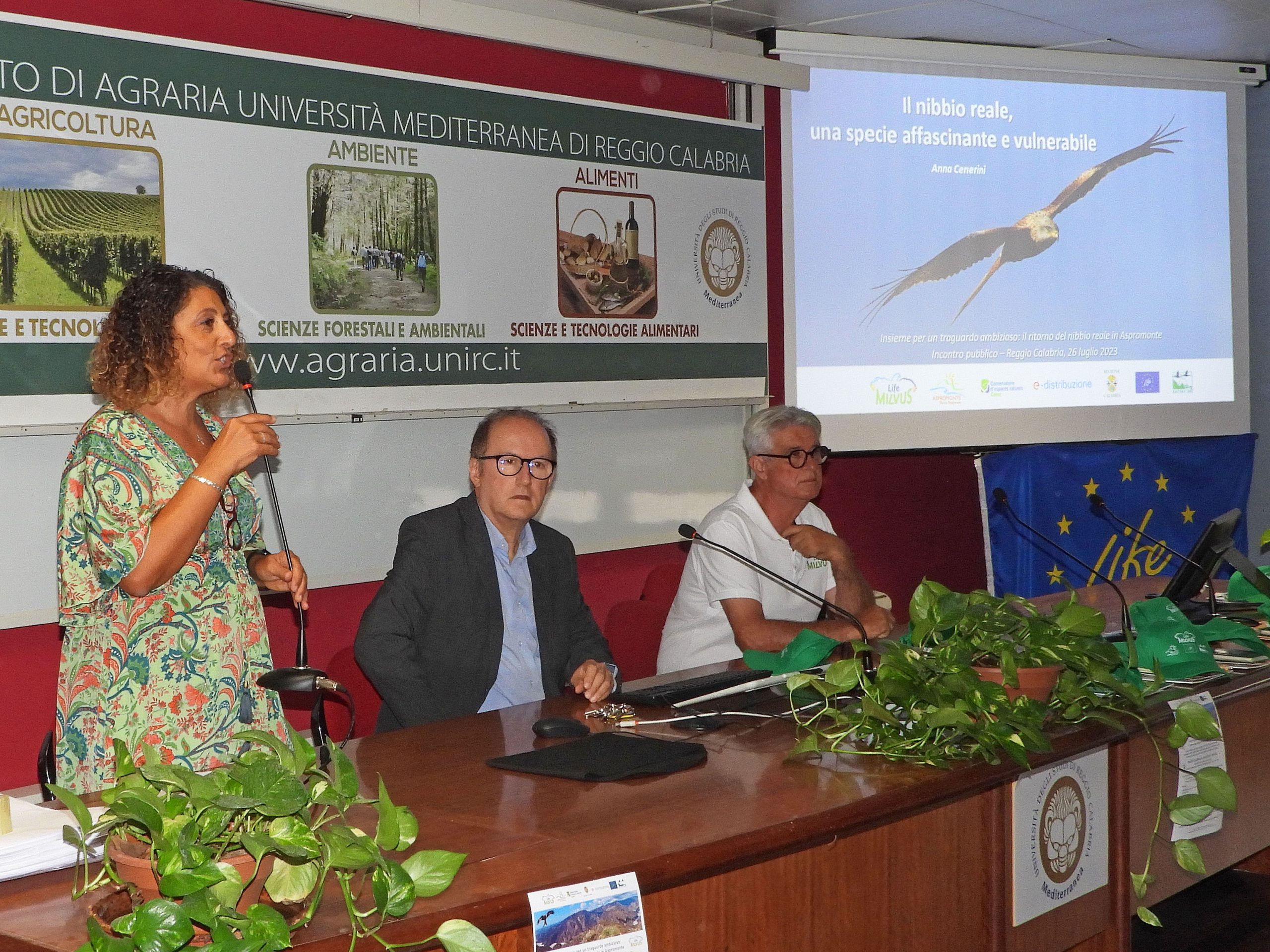
Opening of the meeting by Prof. Virna Fasone, Department of Agriculture Director Giovanni Enrico Agosteo and Aspromonte National Park Authority President Leo Autelitano
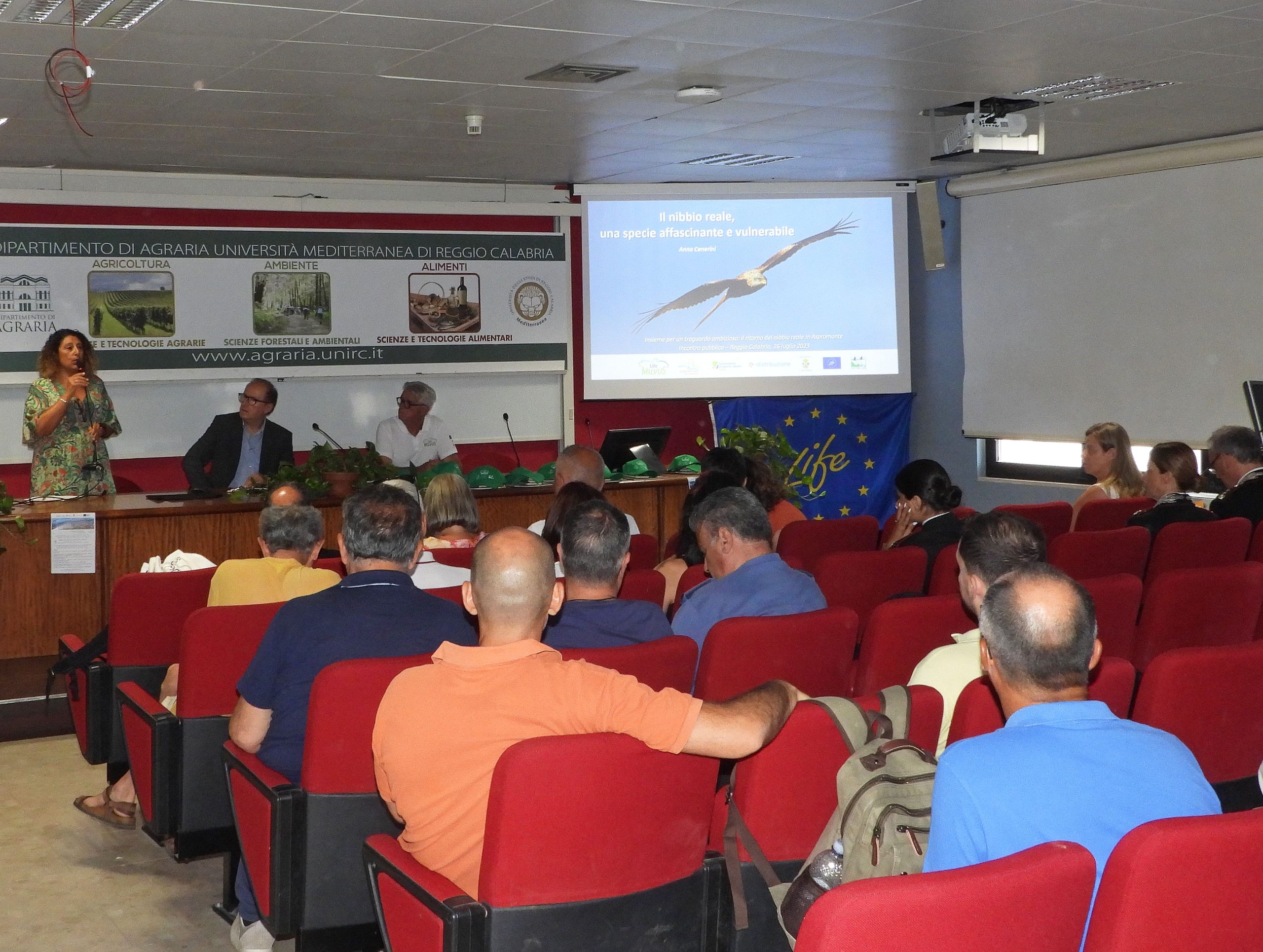
A moment of the meeting
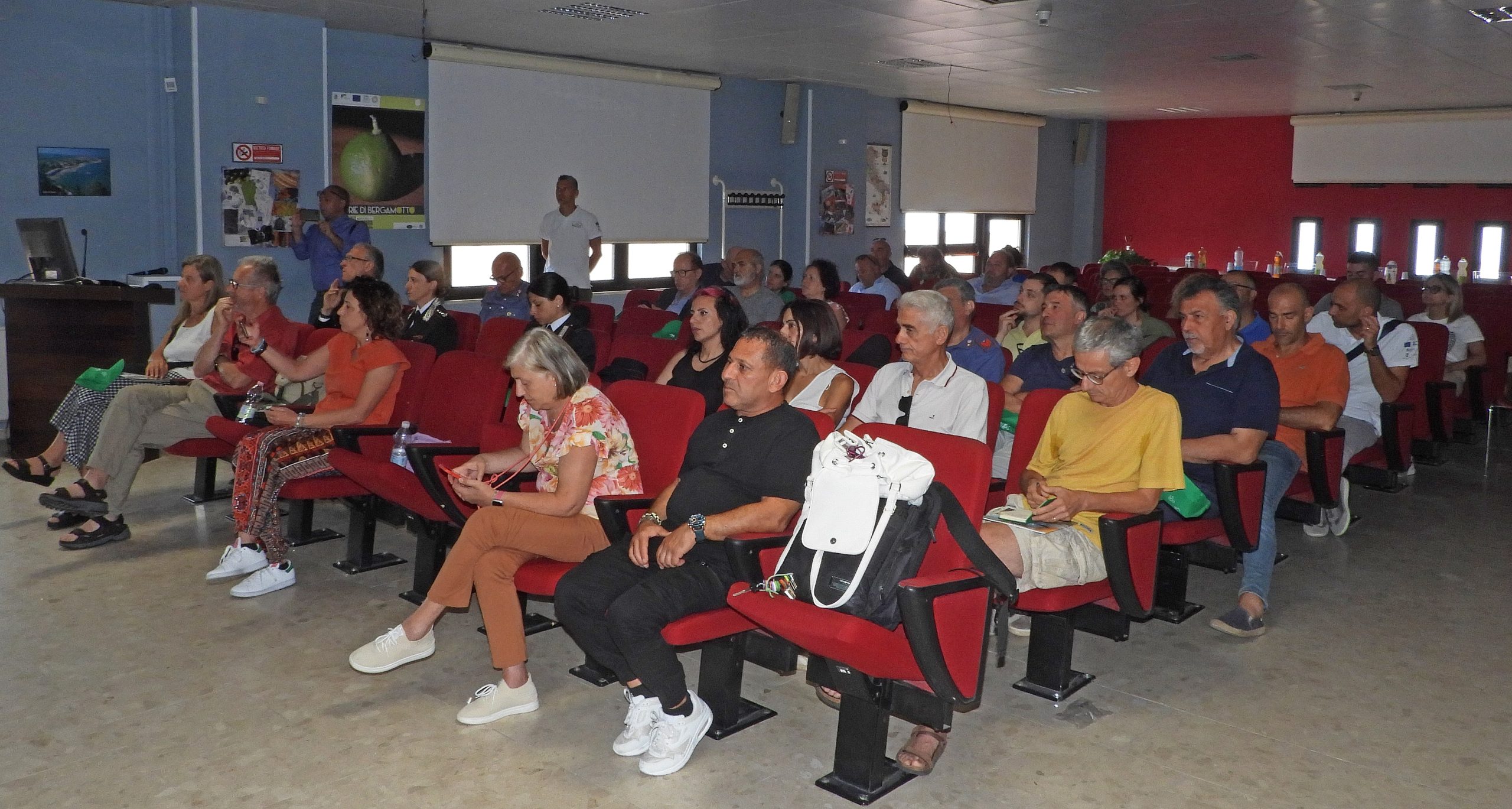
Participants of the meeting

Anna Cenerini (LIFE MILVUS project manager)
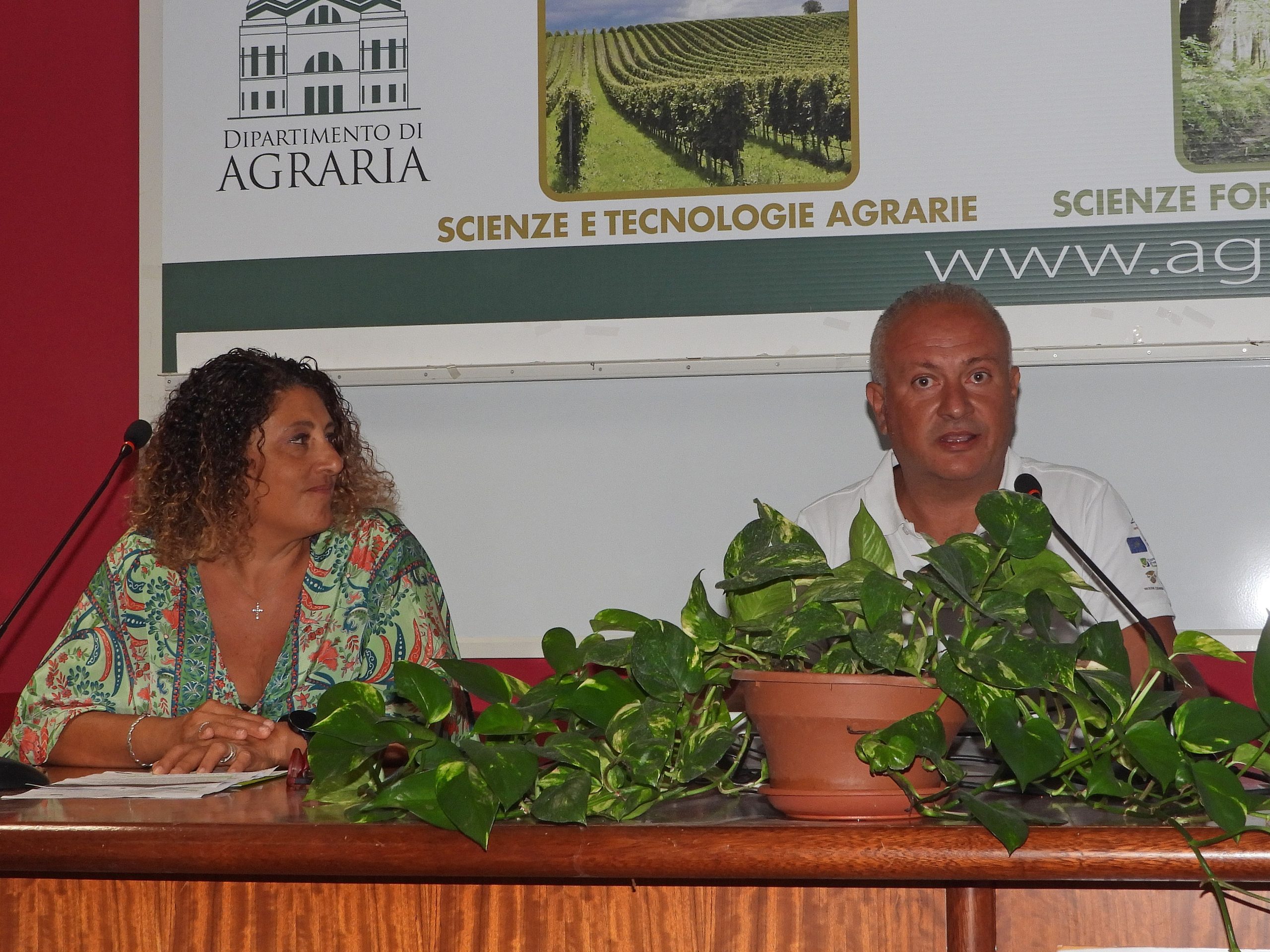
Luca Pelle (EPNA, LIFE MILVUS manager)
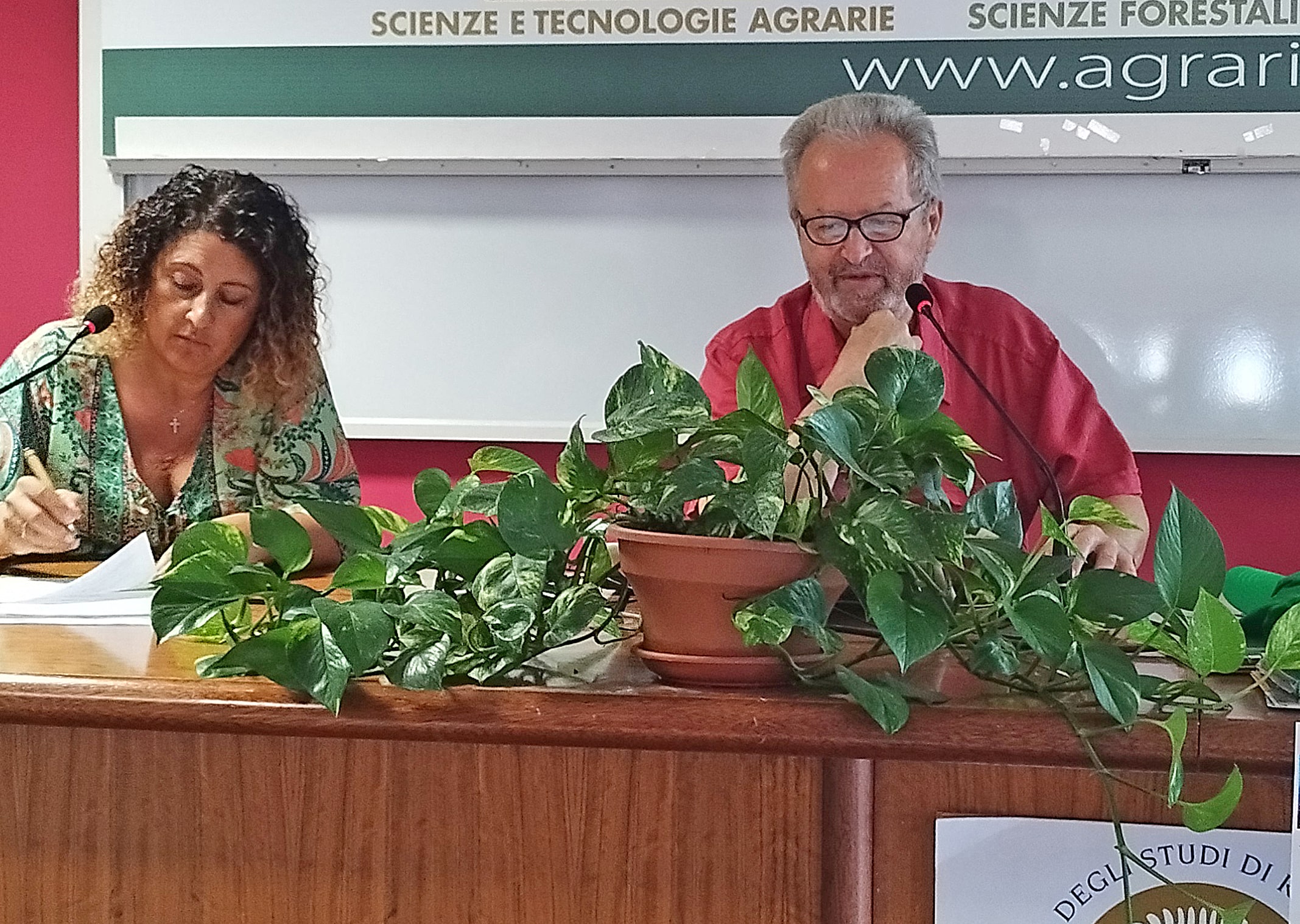
Guido Ceccolini (CERM Association)
